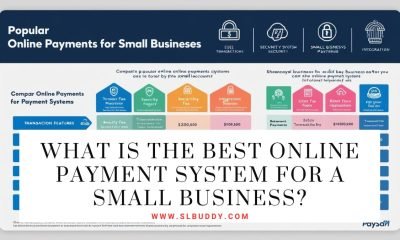
Are you looking to maximize your business’s efficiency by implementing the right processes and systems? Then MRP (Material Requirements Planning) software might be exactly what you need.
This comprehensive guide explains the key benefits of using a material requirements planning system, how it can help optimize both production and inventory management, potential drawbacks, costs involved, and much more.
Keep reading to find out if MRP is the ideal solution for your company’s unique needs.
Understanding MRP Software and Its Benefits for Businesses
As businesses continue to grow and expand, it’s crucial to have efficient and effective systems in place to handle various operations, including inventory management and production planning.
MRP software has emerged as a powerful tool for businesses looking to streamline their manufacturing processes and increase efficiency.
But what exactly is MRP and what benefits does it offer? MRP, or material requirements planning, is a software system that helps manage and plan the resources needed to meet production demands.
This includes everything from raw materials and labor to equipment and logistics.
By automating these processes, businesses can improve accuracy, reduce waste, and save time and money. With MRP software, businesses can also make data-driven decisions and optimize their supply chain for maximum efficiency.
From reducing lead times to improving on-time delivery rates, the benefits of MRP are clear.
So, if you’re looking to take your manufacturing operations to the next level, it’s time to start exploring MRP software solutions.
Choosing the Right MRP Software for Your Business
When it comes to selecting the right MRP software, it’s essential to consider your business’ specific needs and requirements.
Different systems offer diverse features and capabilities, so it’s crucial to identify the functions that align with your operational goals.
Consider factors such as user-friendliness, scalability, real-time data processing, and integration capabilities when choosing MRP software, as these will directly impact the effectiveness of your business operations. Some other factors to consider are the size of your business, the complexity of your manufacturing processes, the nature of your supply chain, and the level of customization required.
Additionally, consider the software’s user-friendliness, scalability for future growth, and integration with your existing systems.
Conduct thorough market research and consider engaging an expert consultant to guide you through the selection process. With the right MRP software, your business can achieve greater productivity, efficiency, and profitability.
Managing Purchasing and Inventory with MRP Software
As businesses grow and expand, so do their purchasing and inventory needs. Keeping track of all the different products and supplies can quickly become overwhelming. That’s where Material Resource Planning (MRP) software comes in.
This type of software helps businesses manage their purchasing and inventory by automatically generating purchase orders and tracking inventory levels in real-time. With MRP software, businesses can make informed decisions about when to order new supplies, how much to order, and from which suppliers.
The result is a more efficient and streamlined purchasing process that helps businesses save time and money.
So if you’re looking to take your purchasing and inventory management to the next level, consider investing in MRP software.
Setting up Manufacturing Schedules and Production Planning with MRP Software
In today’s fast-paced manufacturing world, it’s crucial to have efficient production planning and scheduling software to stay ahead of the competition. This is where Material Requirements Planning (MRP) software comes in.
By utilizing MRP software, manufacturers can create a simplified and streamlined process for their production planning and scheduling needs.
With MRP software, businesses can make better decisions about how much to produce and when to produce it, which can lead to improved product quality, faster turnaround times, and increased profitability.
With this invaluable tool at their disposal, manufacturers can stay ahead of the game and continue to thrive in their industry.
Optimizing Labor Management with MRP Software
As businesses continue to evolve, the need for efficient labor management has become increasingly paramount.
Enter MRP software, the perfect solution for streamlining all facets of your workforce. With its effective labor forecasting and scheduling tools, MRP software enables businesses to optimize their available resources, improve productivity, and ultimately save money.
By using this software, companies can forecast their labor needs well into the future, ensuring that they always have the right number of staff available to handle their workload.
With its powerful reporting capabilities, MRP software allows businesses to easily track and analyze all labor data, making it easy to pinpoint areas for improvement.
So if you’re looking to optimize your labor management processes, look no further than MRP software.
Improving Quality Control with MRP Software
Quality control is a crucial aspect of any manufacturing process, as it ensures that the end product is up to the mark.
However, traditional methods of quality control can be time-consuming and are prone to human errors.
That’s where MRP (Material Requirements Planning) software comes in as a valuable tool to streamline quality control processes.
By automating various steps of quality control, MRP software eliminates the risk of human error and saves time in the process.
It ensures that all quality checks are uniformly applied and documented in real-time, making it easier to detect faults and make improvements.
With MRP software, improving quality control is no longer a hassle, but rather an efficient and intuitive process.
Tracking Sales and Distribution Performance with MRP Software
Keeping track of sales and distribution performance is crucial for any business to ensure that they are meeting their targets and achieving their goals.
This is why MRP software, or Materials Requirements Planning software, is becoming increasingly popular among businesses.
With MRP software, companies can access real-time information on their sales and distribution performance, enabling them to make quick and informed decisions.
This software also streamlines the entire process, from procurement to production and delivery, which saves time and increases efficiency.
Businesses can customize the software to fit their specific needs, making it an essential tool for any company that wants to improve its sales and distribution performance in a competitive market.
Reaping the Financial Rewards of Implementing an MRP System
In today’s cutthroat business world, it’s more important than ever to have a solid plan in place for managing your resources.
One such tool that companies are turning to is MRP, or material requirements planning. By implementing an MRP system, organizations can more effectively forecast their supply needs, manage inventory, and ultimately increase efficiency.
But beyond streamlining operations, there’s another major benefit to implementing MRP: financial gains. By reducing waste and optimizing processes, companies can save money and ultimately reap the rewards of their hard work.
It may take some initial investment to get things up and running, but with the financial gains that MRP can bring, it’s undoubtedly a worthwhile investment for forward-thinking businesses.
Making the Switch to an MRP System – Tips for Smooth Transitioning
As your business grows, your inventory management needs may become more complex and time-consuming.
This is where Material Requirement Planning (MRP) systems can come in handy. They help streamline your inventory management processes, making them more efficient and effective.
However, switching to an MRP system can be overwhelming, especially if your team is used to manual processes or a different type of software.
To make the transition smoother, there are a number of tips you can follow, such as thoroughly researching your options, involving your team in the decision-making process, and setting realistic timelines.
By taking these steps, you can help ensure that your business can make a successful switch to an MRP system.
Don’t miss: Principles and Strategies on Identifying Business Opportunities
The bottom line
Material Requirements Planning (MRP) software is an invaluable tool for any growing business.
Its potential to streamline operations, optimize productivity, improve quality control, and enhance financial performance makes it an investment well worth considering.
The software’s ability to automate critical processes such as purchasing, production planning, labor management, and sales tracking ensures precision and boosts efficiency at all levels.
Transitioning to an MRP system might seem overwhelming at first, but with careful planning, engagement, and realistic timelines, it could be just the game-changer your business needs to thrive in today’s competitive marketplace.










